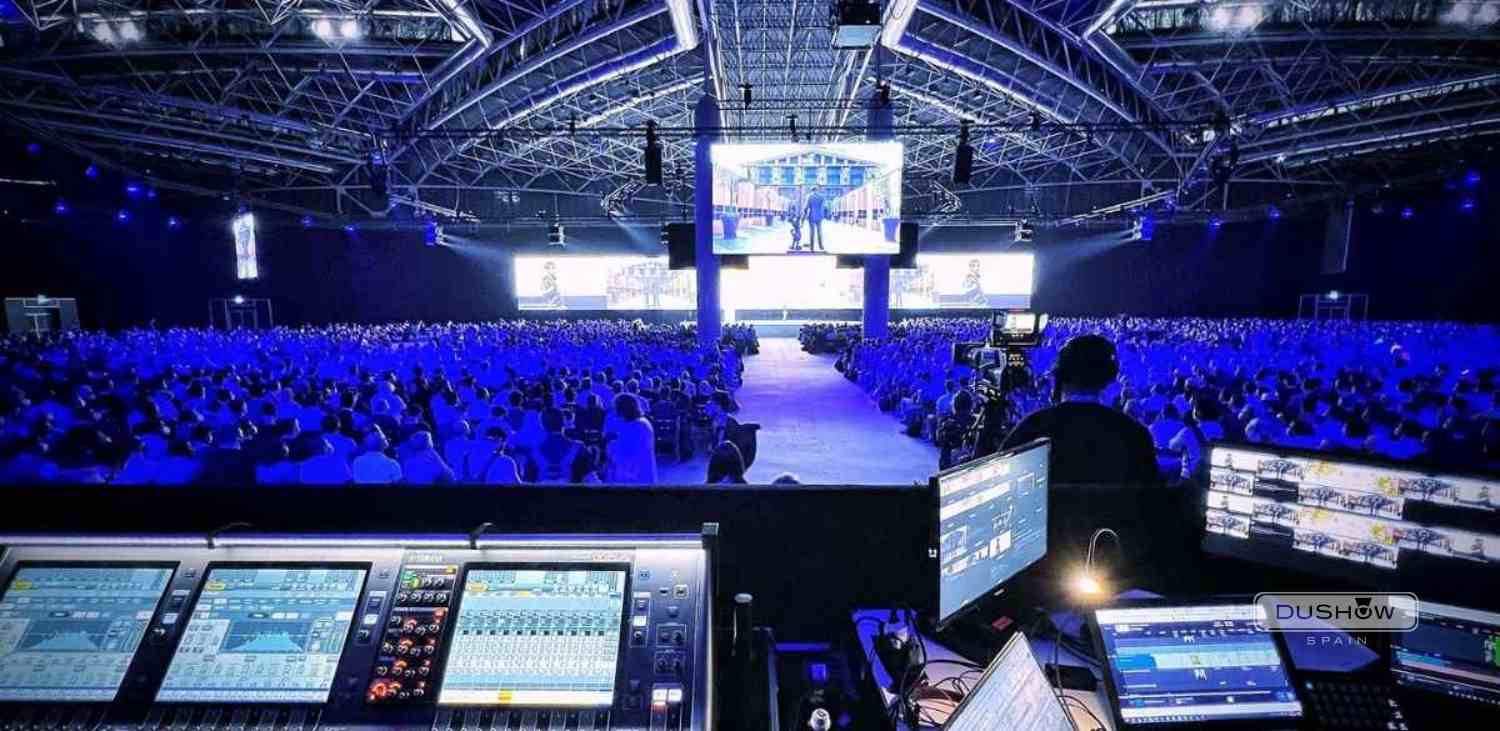Dushow Spain is now Novelty Spain
Common sound management mistakes to avoid at your event
A long list of items must be remembered for the organisation and production of an event; equipment, technical and professional staffers, etc. This can be stressful and cause certain things to be neglected or forgotten throughout the process.
Sound management is a key factor for the success of your event, and one that will help bring the WOW factor. Even so, many event organisers can find it overwhelming if they’re not experts in the field. But don’t worry! We’re here to help. This article will discuss the main mistakes to avoid in sound management at your event. Let’s get started!
Sound management mistakes to avoid at your event
A lot could be written about the most common sound management mistakes that have a direct impact on the final sound quality of an event. But they all originate in the same causes. That’s why we can classify the mistakes in two basic areas:
- Not respecting technical criteria.
- Not investing enough.
Don't underestimate the importance of sound
Sound is one of the most important elements of nearly any event. In fact, there can’t be an event without sound, although organisers sometimes neglect it to produce more spectacular lighting or deploy an even bigger video screen. All of that is fine, as long as the sound quality is aligned with those resources. If you boost some elements but ignore others, you can undermine your own event, and project an unprofessional image to your attendees.
Ignoring technical criteria
Good sound professionals share a common goal with the majority of customers: that the event sounds like the customer has ordered it to sound. But successfully meeting this challenge is no easy task. Sometimes, purely aesthetic decisions can keep you from achieving good sound management with the same tools that would be fine in different conditions. That is why you’ll need to use others that may come with a higher price tag. Here is an example in which the two above-mentioned mistakes are made: the organizer ignores the technical criteria (mistake number 1) that suddenly arose when it was decided to make a minor change (for example, switching from headset to omnidirectional lapel microphones), and so, not investing enough (mistake number 2) causes the sound quality to be lower than expected.
Investing enough
For every action, there is an equal and opposite reaction. This is especially true in the case of sound. Making the necessary investment means achieving the necessary result. Technicians and producers are just that; and they’re not magicians.
Just because something worked in one venue doesn’t mean it will work everywhere. The height of the ceilings (if speaker sets are used), the ambient or reverberant sound, the oratory capabilities of the speakers or, sometimes, even sound equipment that looks identical on paper but, because they are different models and/or manufacturers, offer widely varying results.... These are all reason enough to believe that “one size doesn’t fit all”.
It’s perfectly normal to want to re-use the same equipment from a prior event or attempt to mimic the sound management from another venue because it worked so well there. Even so, it is better to invest a little more and ensure the final desired result, instead of trying to save on that expense and wind up producing an unprofessional event.
Improving sound system quality
As in many other areas, any “quality upgrade” makes for an exponential increase from the economic standpoint: but you shouldn’t pay double just because you want twice as much volume (in fact, following this example, to have twice as much volume you should increase the sound pressure level by 10 db! When, by doubling the sound equipment you would only achieve 3 dB).
According to this premise, any improvement can have a major economic impact on the budget. But it also teaches us that to improve the quality of equipment, greater investment is essential. There are no magic solutions, only imaginative ones.
Communication with the sound technician/professional
In this area technical production decisions regarding sound equipment tend to take into account the “value for money” factor. In other words, the most that can be achieved with a given budget. Dealing with this challenge often means giving up on minor things that may have an impact on sound quality (not good!) or in some minor aesthetic or technical detail (bearable!).
Here, it is not so much a matter of blind faith in the audio department of the company hired as it is mutual trust. The same negative criticism that the customer might receive in the event of poor acoustic results is just as negative for the supplier company, so this has to be a win-win relationship.
We hope you’ve found this article helpful for managing sound at your next event. If you’ve found it useful, please make sure to visit our blog to never miss out on any essential content on the technical production and organisation of face-to-face, hybrid and virtual events.
This article was first published in Dushow Spain, you can read the original Spanish version here.





